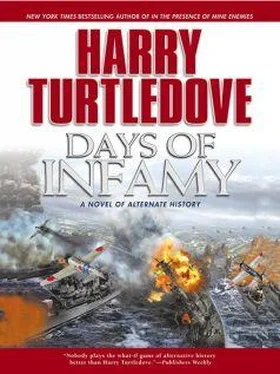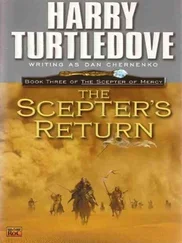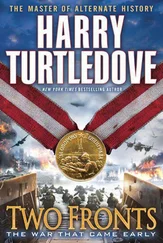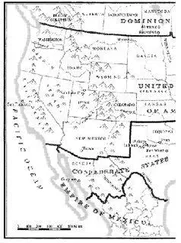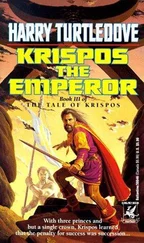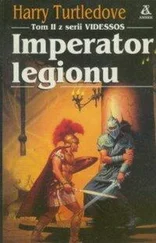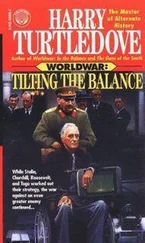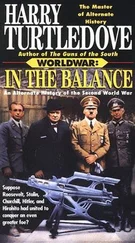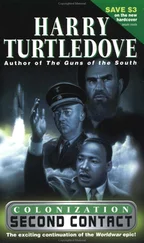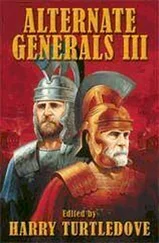Genda watched the fish fall from the plane, watched it dive into the Pacific. The Japanese had had to expend a lot of sweat and engineering on their torpedoes to make sure they didn’t go too deep and bury themselves in the mud under the lochs of Pearl Harbor. Here on the open ocean, that mattered not a bit. The American torpedo could dive as it pleased. It would come up soon enough to strike.
Not fifteen seconds after the torpedo plane launched its missile, the Zero shot it down. That was, of course, fifteen seconds too late. The Akagi turned sharply to starboard, to try to present the smallest possible surface to the torpedo. Some men on the bridge prayed. Others cursed. Some did both at once.
Neither would do any good now. Everything depended on that American pilot’s aim. Genda gritted his teeth. He feared the enemy flier had known exactly what he was doing, and had done it well. He’d thrown his life away like a ten-sen coin to make sure he had the proper line. Which meant…
Thump! The impact echoed through the carrier. But it was only a thump, not the boom Genda had tried to brace himself against.
“A dud!” Half a dozen men said it at once. Smiles of glad relief filled the bridge. Minoru Genda laughed at himself. Maybe prayer had more to do with how things went than he’d thought.
“Some kami watched over us there,” Admiral Nagumo said, which amounted to the same thing.
Another yeoman rushed onto the bridge. Bowing to Nagumo, he said, “Sir, Kaga signals bomb damage from two hits toward the stern. It would have been much worse, her captain says, if the hangar deck hadn’t been empty of planes.”
Nagumo and Genda and everyone else who heard that nodded. Planes waiting to take off were fires waiting to happen. And, like the rest of the carriers, the Kaga had already used up a lot of the munitions she’d brought to Hawaii. That helped make her less inflammable, too. Nagumo asked, “Does she still have power? What speed can she make?”
Genda added, “Can she land planes?” Nagumo, a big-gun admiral down to his toes, would not think of a question like that.
But Nagumo was the task-force commander, and the yeoman answered him first: “Sir, the engine room has taken some damage, but she can make fifteen knots. The engineers are doing all they can with repairs.” Having said that, the rating turned and bowed to Genda. “There is damage on the flight deck, sir. Right now, the ship cannot land planes. Again, the crew does hope to make repairs and keep her battleworthy.”
“Tell them to do all they can. Until we seize airstrips on Oahu, we have to have our flight decks clear,” Genda said. Saluting, the yeoman hurried back to the blinker.
The action seemed over. A few escort vessels were still firing, but Genda couldn’t see that they had any targets. The American planes that had attacked the task force had either gone down or fled.
Admiral Nagumo spoke in wondering tones: “All this fighting, and we have yet to set eyes on an enemy ship.”
“True, sir.” Genda nodded. He could hardly blame Nagumo for his surprise; there had never been a naval battle fought beyond gunnery range before, not in all the history of the world. After a moment, he went on, “The Americans haven’t seen our ships, either. That doesn’t mean we can’t hurt them.”
“ Hai. That’s true, too.” Nagumo still sounded surprised.
COMMANDER MITSUO FUCHIDA stared out across the Pacific. More than anything else, he wanted to be the man who spotted the Americans’ flotilla. So he thought, anyway, till another flier shouted out that he saw ships. Then Fuchida discovered that he’d been wrong. Discovering the enemy was all very well. Destroying him was more important.
“Look for the carrier-or maybe carriers,” he radioed to the pilots in the bombers and dive bombers and torpedo planes. “Worry about other ships only after you’ve wrecked the carrier force. Bombers, line up behind your leaders.”
In training for the attack on Pearl Harbor, the Japanese had discovered that most of their high-altitude bombardiers were not very accurate. They had not had the time to train them all up to the same standard. Instead, they’d assigned the best crews as leaders, and had the others follow them precisely and bomb just where they had. That had dramatically improved their percentage of hits. Now they would try it again.
“There!” A pilot’s voice cracked with excitement. “That ship is launching planes!”
For a moment, Fuchida didn’t see them. Then the glint of sun off metal or glass drew his eye toward the enemy planes, tiny in the distance. Yes, the ship that was launching them had a flight deck, but she also had smooth, almost rakish lines that showed the hull had originally been intended for a battleship or battle cruiser. The Akagi and the Kaga were the same sort of conversion. The Americans, if Fuchida remembered rightly, had started the Lexington and the Saratoga as battlewagons before changing their minds.
Which one was that, down below? He shrugged. It hardly mattered. Now that the Japanese had spotted her, they had to hit her.
He and his comrades had been spotted, too. The ships around the carrier started throwing up antiaircraft fire. Most of them began taking evasive action. The carrier stayed headed into the wind so she could go on sending up planes. That made her easier to pick out from the others.
“Each group-attack the target,” Fuchida ordered. “Fighters, accompany the torpedo planes.” They were the ones that had to fly low and straight. They most needed fighter protection. Fuchida went on, “Lead bombers-line up on the enemy carrier.”
He was a lead bomber himself. He used the voice tube to ask his bombardier how he should set the bomber’s course. “Five degrees to the left, sir,” the man said at once, and then, half a minute later, “Another five degrees.”
Fuchida obeyed with machinelike precision. For the time being, he was not his own man, only an extension of the bombardier’s will. Tracers climbed from the ships below, reaching for his plane. Flak burst in black clouds. Some of the explosions came close enough to shake the bomber, making it rise and dip in the air. He was flying straight and level, which gave the gunners a splendid target. He kept on even so. The mission was all that mattered.
Then the B5N1 leaped again. “Bombs gone!” the bombardier cried exultantly.
The bombardiers flying behind Fuchida would do their best to launch their bomb loads from the same spot as he had. Now the bomber was his again. He could speed up, slow down, jink, dive, or climb to evade the ferocious antiaircraft fire coming up from the Pacific.
And he could pay attention to the rest of the attack on the carrier. Down tumbled the bombs, till they disappeared against the background of the ocean. Zeros and Buffaloes were dueling at lower altitude. Several planes aimed straight for the carriers. Those would be the B5N2s with their torpedoes. One of them caught fire and crashed, then another-shot down, no doubt, by American fighters. The rest bored in on the enemy ship.
Bombs began bursting around the carrier. Was that a hit? Commander Fuchida couldn’t be sure. The big ship dodged desperately. She didn’t seem to be slowing down. If any of the bombs had struck home, they hadn’t done much damage. Fuchida’s curses made his disappointment echo in the cockpit.
Where were the Aichi D3A1s? The dive bombers shouldn’t miss, especially when the enemy fighters were pulled down toward the sea battling Zeros and attacking torpedo planes. That gave the Aichis a free run at the target.
Just about all the bombs from the high-altitude bombers had fallen now. Fuchida had thought some of them hit. The splashes couldn’t have come closer to the carrier. But she emerged from those columns of water still twisting and dodging at top speed. Hitting a moving target from four kilometers up wasn’t easy. We should have done it, though. Fuchida bit his lip in mortification.
Читать дальше
